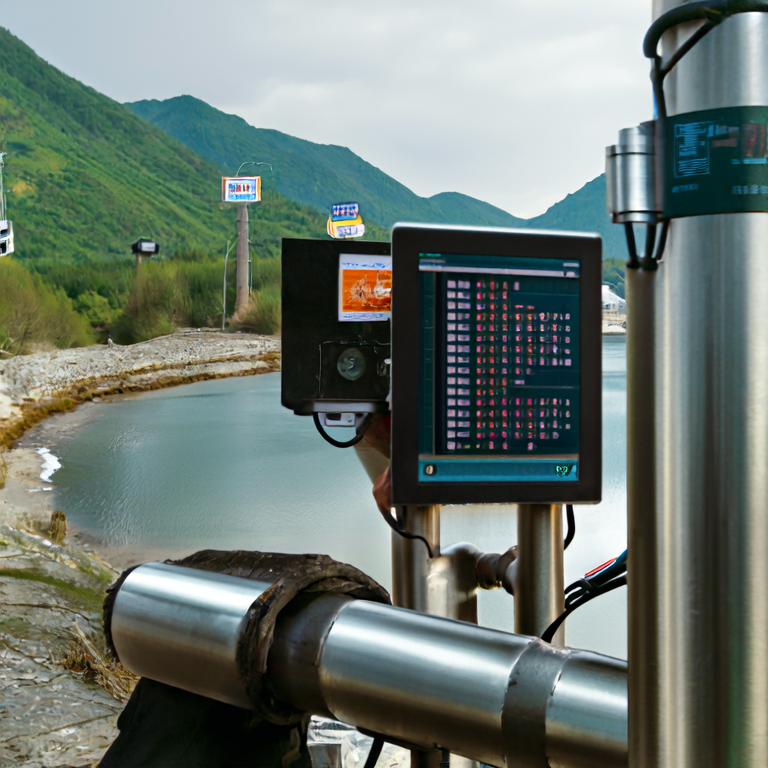Hydro Plant Uses Electromagnetic Flow Transmitter to Monitor Remote River Intake
Aug. 22, 2025
Table of Contents
- 1. Introduction
- 2. Importance of Monitoring Remote River Intake
- 3. Electromagnetic Flow Transmitters Overview
- 4. Applications in Hydro Plants
- 5. Advantages of Using Electromagnetic Flow Transmitters
- 6. Case Study: Successful Implementation
- 7. Comparison with Other Flow Measurement Devices
- 8. Steps for Effective Deployment
- 9. Conclusion
1. Introduction
The efficient management of water resources is critical for hydro plants, especially when monitoring remote river intake. Electromagnetic flow transmitters play a vital role in this domain, providing accurate and real-time measurements. These devices utilize electromagnetic principles to measure the flow of water, thus enhancing operational efficiency and reducing potential losses.2. Importance of Monitoring Remote River Intake
Monitoring the flow at river intake points is essential for several reasons:- Resource Sustainability: Ensures that water intake does not exceed environmental limits.
- Regulatory Compliance: Helps in adhering to local and international water regulations.
- Operational Efficiency: Improves energy generation and reduces downtime in hydro operations.
- Maintenance Planning: Early detection of anomalies can reduce maintenance costs.
3. Electromagnetic Flow Transmitters Overview
Electromagnetic flow transmitters measure the velocity of conductive fluids. They consist of:- Magnetic Field: Generates an electromagnetic field perpendicular to the flow direction.
- Electrodes: Measures the voltage induced in the fluid.
- Signal Processing: Converts the voltage signal into flow rate.
Working Principle
The operation is based on Faraday\'s Law of Electromagnetic Induction, which states that a voltage is induced when a conductor moves through a magnetic field.4. Applications in Hydro Plants
In hydroelectric facilities, electromagnetic flow transmitters are vital for:- Flow Measurement: Determining the flow rate of water from rivers.
- Remote Monitoring: Allowing for operations from distant locations.
- Data Collection: Gathering data for analysis and reporting.
5. Advantages of Using Electromagnetic Flow Transmitters
The use of electromagnetic flow transmitters provides numerous benefits:- Accuracy: High precision in flow measurement, critical in hydro applications.
- No Moving Parts: Reduced wear and tear, enhancing longevity.
- Low Maintenance: Minimal upkeep is required compared to mechanical devices.
- Versatility: Can measure a variety of conductive liquids, including sludge and wastewater.
6. Case Study: Successful Implementation
A hydro plant in Switzerland recently implemented electromagnetic flow transmitters in its operations:Project Overview
The plant integrated flow monitoring to enhance efficiency by 15% within the first year.Data Collected
Flow readings showed a consistent rate of 500 liters per minute with a variability of only 2.5% across varying conditions, illustrating accuracy and reliability.7. Comparison with Other Flow Measurement Devices
The effectiveness of electromagnetic flow transmitters can be compared to other technologies like ultrasonic and mechanical flow meters:| Feature | Electromagnetic Flow Meter | Ultrasonic Flow Meter | Mechanical Flow Meter |
|---|---|---|---|
| Accuracy | ±1% of reading | ±2% of reading | ±5% of reading |
| Maintenance | Low | Medium | High |
| Operational Environment | Wide range of temperatures | Sensitive to temperature | Limited by environment |
8. Steps for Effective Deployment
Proper installation and maintenance of electromagnetic flow transmitters are crucial:- Site Assessment: Identify the best locations for installation.
- Calibration: Ensure devices are properly calibrated to guarantee accuracy.
- Regular Maintenance: Schedule routine checks to keep systems operational.
- Data Analysis: Continuously monitor data for performance enhancement.
Flow Chart for Deployment

9. Conclusion
The integration of electromagnetic flow transmitters in hydro plants facilitates more efficient water resource management at remote river intakes. Understanding their functionalities, advantages, and best practices for deployment can help in achieving significant operational improvements. Such innovations not only ensure compliance but also contribute positively to sustainability efforts.
Latest News




